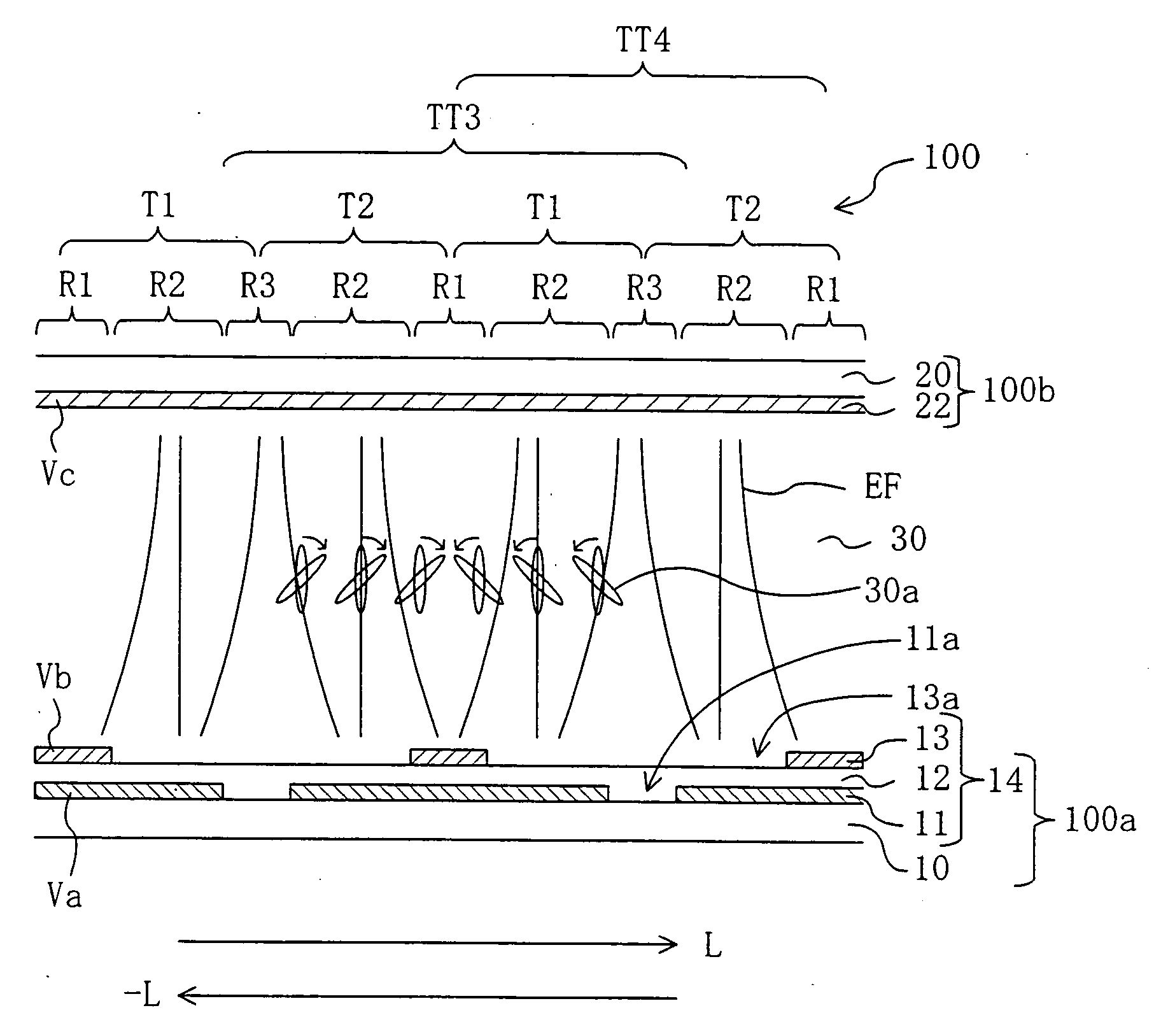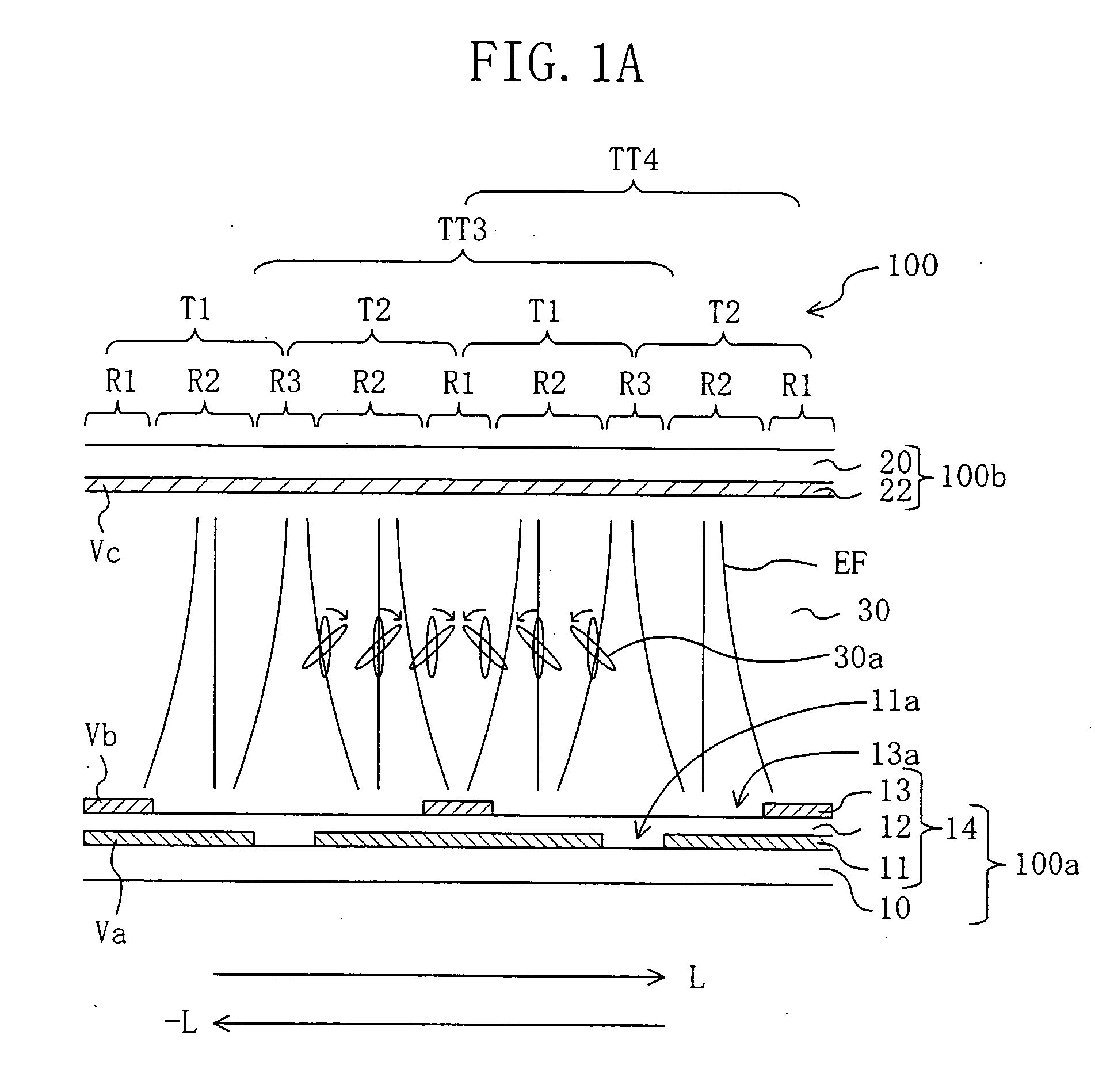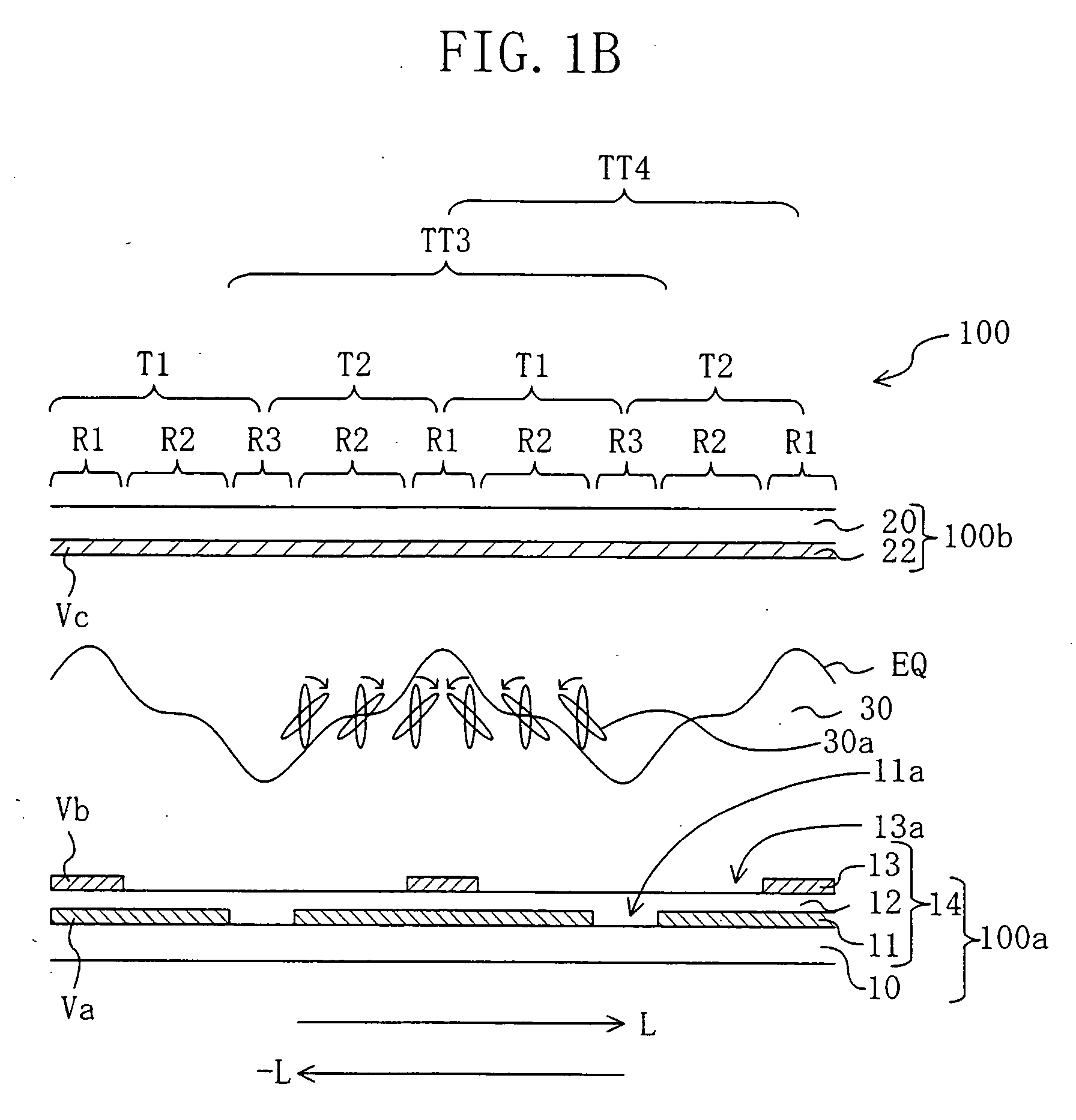Liquid crystal display device
a liquid crystal display and display device technology, applied in non-linear optics, instruments, optics, etc., can solve the problems of difficult to obtain a uniform multi-domain orientation, large “viewing angle dependency” and varying the appearance of the displayed image, and achieve the highest transmittance, maximum light efficiency, and increased light efficiency
- Summary
- Abstract
- Description
- Claims
- Application Information
AI Technical Summary
Benefits of technology
Problems solved by technology
Method used
Image
Examples
embodiment 1
[0112] A liquid crystal display device of Embodiment 1 is an active matrix type liquid crystal display device using TFTs, wherein picture element electrodes arranged in a matrix having rows and columns function as the first electrode, and a counter electrode which is used commonly to the plurality of picture element electrodes functions as the second electrode.
[0113]FIG. 3A and FIG. 3B schematically illustrate a liquid crystal display device 300 according to Embodiment 1 of the present invention. FIG. 3A is a plan view schematically illustrating a single picture element region (a TFT element, a storage capacitor element, etc., are omitted), and FIG. 3B is a cross-sectional view taken along line 3B-3B′ of FIG. 3A.
[0114] The liquid crystal display device 300 includes a TFT substrate 300a, a counter substrate 300b and a liquid crystal layer 330 provided between the TFT substrate 300a and the counter substrate 300b. The liquid crystal layer 330 is a vertical alignment type liquid crys...
embodiment 2
[0138] The TFT type liquid crystal display device 300 of Embodiment 1 employs the structure of the first electrode 14 illustrated in FIG. 1A for the picture element electrodes of the conventional TFT type liquid crystal display device. In contrast, a TFT type liquid crystal display device of Embodiment 2 employs a structure similar to that of the first electrode 14 illustrated in FIG. 1A for a counter electrode of the conventional TFT type liquid crystal display device. The structure of the liquid crystal display device of Embodiment 2 may be the same as that of the conventional liquid crystal display device (having the structure of the liquid crystal display device 300 of Embodiment 1 except for the picture element electrode 314) except for the structure of the counter electrode. Accordingly, only the structure of the counter electrode will be described below.
[0139]FIG. 8 shows a plan view of a counter substrate 600b of the liquid crystal display device of Embodiment 2. The counte...
embodiment 3
[0144] According to the present invention, it is possible to obtain a sufficient orientation-regulating force by, for example, employing an electrode structure similar to that of the first electrode 14 illustrated in FIG. 1A for the structure of one of a pair of electrodes which oppose each other via a liquid crystal layer therebetween. Therefore, even with a PALC, for which it is difficult to obtain an orientation-regulating force with the conventional structure (e.g., that disclosed in Japanese Laid-Open Patent Publication No. 11-258606), a sufficient orientation-regulating force can be obtained by employing the electrode structure of the present invention.
[0145] The structure and operation of a liquid crystal display device 700 of Embodiment 3, which uses the present invention with a PALC, will now be described.
[0146]FIG. 9 schematically illustrates the liquid crystal display device 700 of Embodiment 3. The liquid crystal display device 700 includes a liquid crystal display cel...
PUM
| Property | Measurement | Unit |
|---|---|---|
| area | aaaaa | aaaaa |
| thickness | aaaaa | aaaaa |
| angle | aaaaa | aaaaa |
Abstract
Description
Claims
Application Information
 Login to View More
Login to View More - R&D
- Intellectual Property
- Life Sciences
- Materials
- Tech Scout
- Unparalleled Data Quality
- Higher Quality Content
- 60% Fewer Hallucinations
Browse by: Latest US Patents, China's latest patents, Technical Efficacy Thesaurus, Application Domain, Technology Topic, Popular Technical Reports.
© 2025 PatSnap. All rights reserved.Legal|Privacy policy|Modern Slavery Act Transparency Statement|Sitemap|About US| Contact US: help@patsnap.com



